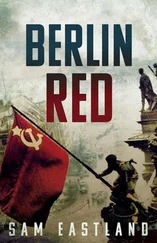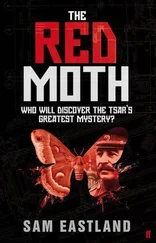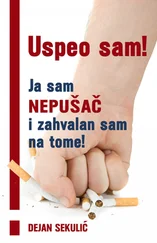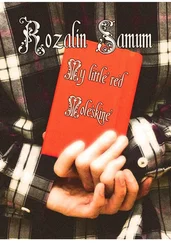Sam Eastland - Red Icon
Здесь есть возможность читать онлайн «Sam Eastland - Red Icon» весь текст электронной книги совершенно бесплатно (целиком полную версию без сокращений). В некоторых случаях можно слушать аудио, скачать через торрент в формате fb2 и присутствует краткое содержание. Год выпуска: 2014, ISBN: 2014, Издательство: Faber & Faber, Жанр: Исторический детектив, на английском языке. Описание произведения, (предисловие) а так же отзывы посетителей доступны на портале библиотеки ЛибКат.
- Название:Red Icon
- Автор:
- Издательство:Faber & Faber
- Жанр:
- Год:2014
- ISBN:9780571312313
- Рейтинг книги:3 / 5. Голосов: 1
-
Избранное:Добавить в избранное
- Отзывы:
-
Ваша оценка:
- 60
- 1
- 2
- 3
- 4
- 5
Red Icon: краткое содержание, описание и аннотация
Предлагаем к чтению аннотацию, описание, краткое содержание или предисловие (зависит от того, что написал сам автор книги «Red Icon»). Если вы не нашли необходимую информацию о книге — напишите в комментариях, мы постараемся отыскать её.
Red Icon — читать онлайн бесплатно полную книгу (весь текст) целиком
Ниже представлен текст книги, разбитый по страницам. Система сохранения места последней прочитанной страницы, позволяет с удобством читать онлайн бесплатно книгу «Red Icon», без необходимости каждый раз заново искать на чём Вы остановились. Поставьте закладку, и сможете в любой момент перейти на страницу, на которой закончили чтение.
Интервал:
Закладка:
He took Elizaveta’s hand in both of his. ‘I suppose you will no longer need me as your bodyguard,’ he croaked.
‘Luckily for both of us, that’s true,’ she replied.
Then a nurse arrived and ordered him back into bed.
Kirov and Pekkala left Elizaveta at the hospital, to make sure that she was suffering no ill effects from her exposure to the chemical weapon.
‘But what about you?’ she asked Pekkala.
‘I’ll be back,’ he told her, ‘but first your husband and I have some business to take care of.’
‘Where are we going?’
‘To see if your theory is correct.’
‘Theory?’ asked Kirov, following him down the corridor. ‘What theory?’
26 March 1945
Gorokhovaya Ulitsa, Leningrad
In what had once been the courtyard of Rasputin’s apartment building, the mangled wreckage of a Soviet 37mm anti-aircraft gun still aimed its useless barrel at the sky. An artillery round had landed in the street outside, blown through the brick wall of the courtyard and demolished the steel gun-carriage used to transport the gun. The gun itself bore the scars of multiple shrapnel strikes and the rubber tyres, which had been painted a camouflage green, were now warped and deflated and the paint had crackled so that it resembled the skin of a reptile. It appeared that the gun had simply been abandoned, along with the ground floor of the building, which had also been ruined in the blast.
Pekkala stood in the courtyard, shielding his eyes with one hand as he squinted up to the floor on which Rasputin had lived.
‘I still don’t understand what we’re doing here,’ said Kirov.
Pekkala lowered his hand and turned to the major. ‘Testing your theory,’ he said.
‘I wish you would tell me what this damned theory of mine is!’ shouted Kirov.
They entered the building through the gaping hole in the masonry which had once held an ornate front door, complete with frosted glass engraved with a French-influenced pattern of twined ivy leaves that had once been all the rage in this city. Then Pekkala began to climb the stairs.
Kirov followed, grudgingly.
When the two men reached Rasputin’s old apartment, Pekkala paused and looked around. The landing on which he stood had not seen a coat of paint in many years. The loose panes of the window looking out over the courtyard rattled in the breeze. It was not that things had looked that much better in Rasputin’s day. The Siberian had never paid attention to the upkeep of the various houses where he stayed as a guest of wealthy benefactors. That duty had usually fallen to the Tsarina herself, who had been known to send in teams of decorators to recarpet floors, replace every article of furniture, even down to the cutlery, and repaint the walls in her favourite shade of mauve.
That colour, which Pekkala loathed because it reminded him of the boiled liver he had been forced to eat as a child, had returned many times to his mind over the past few days as he recalled the occasion when he came to visit Rasputin after the theft of the icon. The walls had just been painted. When he remarked upon the fact to Rasputin, he had received the answer that the Tsarina had ordered it to be done out of reverence for the icon. And he had thought no more about it. Until now.
Pekkala rapped his knuckles on the door.
‘Who’s there?’ called the nervous voice of a man standing on the other side, so close that the shadow of his feet showed on the floor.
‘Special Operations,’ said Pekkala.
‘Special Operations?’ echoed the man. ‘What did they send you for?’
Kirov turned to Pekkala and shrugged. Then he faced the door again. ‘Are you going to open up or not?’
There was a rattling of chains and the clunk of a deadbolt sliding back. The door swung wide, revealing a short, elderly man with a fuzz of grey hair and startled-looking blue eyes, which gave him the appearance of a baby bird that had been ousted from its nest. He wore a thick, long-sleeved undershirt tucked into high-waisted black trousers that were held up by a pair of white braces. He had no shoes on, and his bare feet looked small and vulnerable. ‘My name is Gleb Kutsov,’ said the man, pronouncing his name in a way that sounded almost like a sneeze, ‘and I would have taken care of it. All I needed was a little more time.’
‘What is he talking about?’ whispered Kirov.
Pekkala stepped into the room and was surprised to see Rasputin’s old leather couch still sitting in the corner. But that, other than the layout of the room, was the only remaining trace of the Siberian. The walls, no longer mauve, had been covered over in paper of a chiffon-yellow colour decorated with a repeating pattern of tiny red flowers. In the place where the icon had been, however briefly, hung a small reprint of Leonid Kotliarov’s portrait of a miner named Alexei Stakhanov, who had come to symbolise the ideal Soviet worker. In the picture, Stakhanov was chipping away at a coalface with a large pneumatic drill. He wore clothes almost as dark as the coalface itself and his features were illuminated by some impossible light source.
‘Like I said,’ repeated the man, ‘there was no need to call on Special Operations for a matter as simple as paying the rent!’
‘Is that why you think we are here?’ asked Pekkala.
‘Well, isn’t it?’ replied the man. ‘Let me tell you something about this so-called landlord.’
Pekkala raised his hand, opening his fingers slowly, like a magician revealing the disappearance of a coin.
The man fell immediately silent.
‘I am not here about the rent,’ Pekkala said quietly.
‘Then what on earth . . . ?’ Kutsov paused as he followed Pekkala’s gaze to the painting of Stakhanov. ‘The print?’ he asked. ‘Is there something wrong with it? Has the artist fallen out of favour? Because if he has, I swear to you, comrades, I knew nothing about it!’ Kutsov began to breathe heavily. ‘I never really liked it, to be honest. A friend gave it to me, and a friend no longer, I should say!’ He all but lunged at the wall, removed the painting from its supporting nail and handed it to Major Kirov. ‘Take it!’ he commanded, turning his head away as if he could not even bear to see the painting any longer. ‘Make it go away! I never want to see it again.’
Pekkala stepped up to the blank wall. ‘Was this nail here when you moved in?’ he asked.
‘Yes, I think so.’
‘And when did you move in?’
‘I’ve been here since 1923. The place had been empty for several years when I arrived.’
Pekkala reached over and tapped against the wall. ‘It’s not very thick.’
‘It’s just a board, I think,’ said Kutsov, staring at the space as if to find some meaning in its blankness.
‘I am sorry to do this,’ said Pekkala, and with those words, he removed the lock knife from his pocket, opened the blade and rammed the tip into the wall.
Kutsov gasped, as if the metal had pierced his own flesh.
Without letting the blade sink in too deeply, Pekkala dragged the knife down the wall, and then across and then dragged it back up again, creating a U-shaped scar in the thin plaster board. Then, his teeth clenched with the effort, he worked the knife across the top until a rectangular cut had been made. He then put the knife away and, with one sharp strike from the heel of his palm, knocked the piece loose. It fell back into the space behind the wall and dropped away.
And then the three men stared in amazement at the picture which met their eyes. It was The Shepherd , its bright colours obscured by a fine layer of plaster dust.
Pekkala leaned forward and, as if extinguishing a candle, blew away the powder.
‘I know that painting,’ said Kutsov. ‘But I thought . . .’
Читать дальшеИнтервал:
Закладка:
Похожие книги на «Red Icon»
Представляем Вашему вниманию похожие книги на «Red Icon» списком для выбора. Мы отобрали схожую по названию и смыслу литературу в надежде предоставить читателям больше вариантов отыскать новые, интересные, ещё непрочитанные произведения.
Обсуждение, отзывы о книге «Red Icon» и просто собственные мнения читателей. Оставьте ваши комментарии, напишите, что Вы думаете о произведении, его смысле или главных героях. Укажите что конкретно понравилось, а что нет, и почему Вы так считаете.










